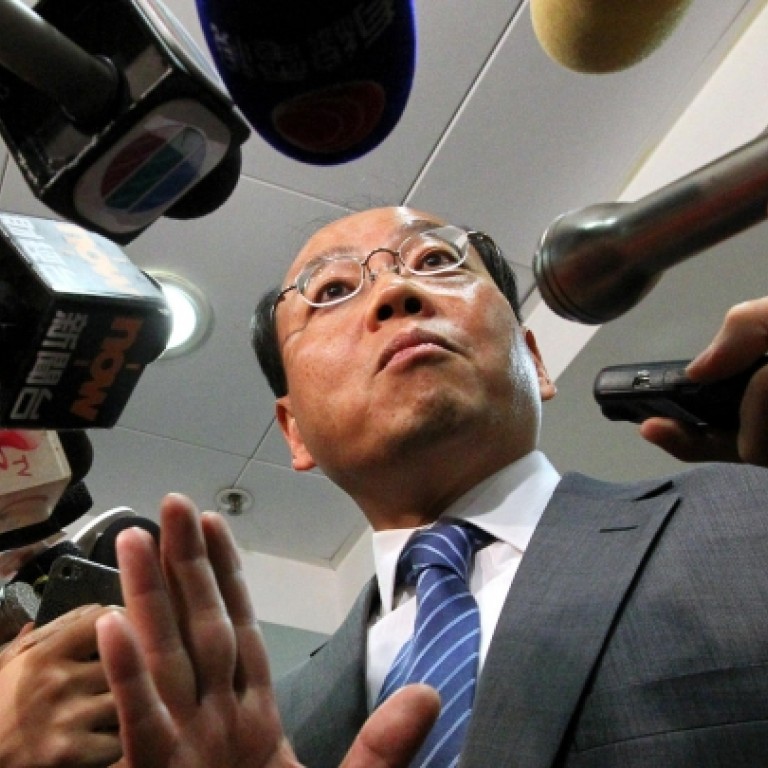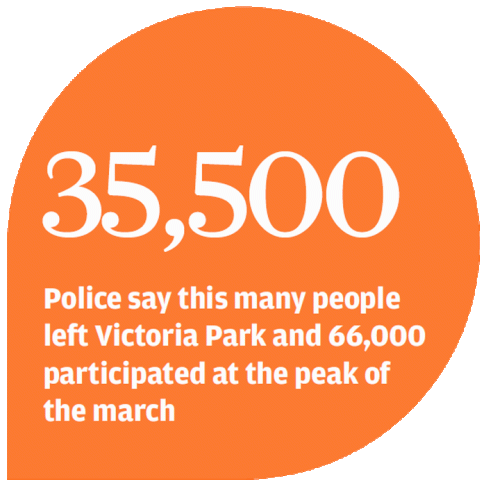
Queue jumpers at July 1 march were warned of 'tough action'
Watchdog says consensus reached earlier to stop marchers from cutting in
Police warned protesters before July 1 that "resolute action" would be taken against anyone trying to join the democracy march in Causeway Bay, according to the police watchdog.

Police said others tried to join the pro-democracy march there, rather than at the starting point in Victoria Park. The situation escalated when angry protesters carried away a police barricade, and one person who was pushed against the barricade fell. Police removed several protesters.
"In the meeting beforehand, a consensus was reached [to stop marchers from cutting across the lanes]," said Independent Police Complaints Council secretary general Ricky Chu Man-kin.
"But the meeting minutes didn't show clearly [whether the march organiser agreed to this]." Despite the scuffles - which lasted about 20 minutes - Chu said police arrangements for the annual march had been satisfactory. He added that the demonstration ran more smoothly than last year.
March organiser the Civil Human Rights Front earlier accused the police of breaking an agreement with them to open all six lanes of Hennessy Road to the protesters when necessary.
"The police never made this promise. It wouldn't have been logical for us to make such a promise," said Police Commissioner Andy Tsang Wai-hung.
Tsang added that the eastbound lanes had been reserved for emergency services and the police were responsible for ensuring that they were not disrupted. Police eventually opened the eastbound lanes between Sogo and Hysan Place - a distance of about 100 metres - for half an hour to speed up progress.
Daisy Chan Sin-ying, of the Civil Human Rights Front, said: "Marchers had been waiting in Victoria Park for over an hour to get going and many more were waiting in Causeway Bay to join the march … But police said not many people were joining the march so there was no need to open the other three lanes."
Chan said the organiser would lodge a complaint about the police arrangements to the Independent Police Complaints Council.
In response to the large discrepancy between the police estimate of the turnout and those of other groups, Tsang said the calculation was done to assist officers in doing their job on the day. "We're not [conducting] an academic study. It's only for the sake of crowd control that we do this," Tsang said. "What the police do is not aimed at embarrassing anyone or pleasing anyone."
March organisers said 430,000 people braved the heavy rain to take part in the march. Police said 35,500 left Victoria Park and 66,000 participated at its peak. Paul Yip Siu-fai, a statistician at the University of Hong Kong, put the turnout at 103,000, while HKU's public opinion programme put the figure at 93,000.
